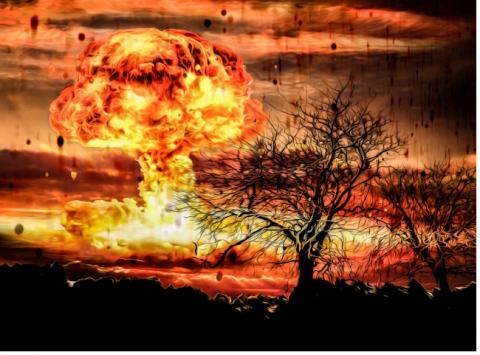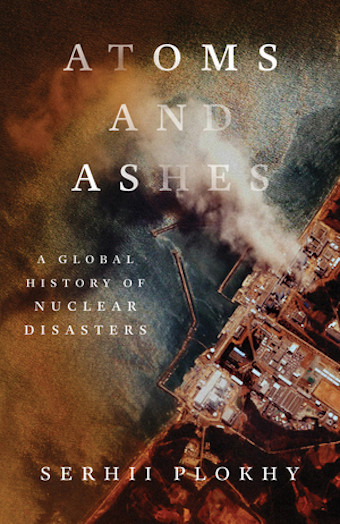‘Atoms and Ashes’: What Happens When Nuclear Power Goes Wrong?

Atoms and Ashes: A Global History of Nuclear Disasters
By Serhii Plokhy
Norton
368 pages
Three Mile Island. Chernobyl. Fukushima. These names are seared into our consciousness, inescapable when contemplating the future of nuclear power.
Other lesser-known nuclear accidents, as described in Serhii Plokhy’s Atoms and Ashes: A Global History of Nuclear Disasters, remind us not only that state-of-the-art technology is never foolproof, but that when you add human error into the mix, truly awful things can happen.
In Atoms and Ashes, Plokhy leads us on a “guided tour” of disasters besetting nuclear power in the past 70 years. These include the Castle Bravo nuclear test on the Marshall Islands (1954); the explosion of a nuclear waste tank at Kyshtym, in the Ural Mountains of the Soviet Union (1957); a fire at the Windscale Works in England (1957); Three Mile Island in the U.S. (1979); Chernobyl, still the standard-bearer for everything that can go wrong with nuclear power (1986); and the Fukushima multiple reactor meltdown in Japan (2011), among the most calamitous of those under scrutiny here.
Despite these terrible events, Plokhy says, “a new and powerful argument has emerged for the use of low-carbon nuclear energy: climate change.” The European Commission has declared nuclear as a “green” energy, with great potential as a more significant source of energy in the years to come.
But this argument is undercut by the accidents and mishaps dogging the nuclear power industry.

Time and again, breakdowns in technology (in an industry that has only existed since the early 1950s) are made worse by mistakes committed by scientists and engineers—either because they neglected basic safeguards or because, in the heat of the moment, they took the wrong actions, leading to even deadlier outcomes. (Of course, natural disasters like the magnitude 7.3 earthquake that shook Japan, followed by a devastating tsunami, can’t be ascribed to human error.)
And the aftermaths of these world-shaking events have been devastating in their own ways:
“The exclusion zone around the [Chernobyl] site extends to 1,660 square miles, while areas heavily affected by fallout are estimated at more than 39,000 square miles. Today, the abandoned city of Prypiat and the Chernobyl exclusion zone are major tourist attractions. They serve as reminders of the dangers of mismanaging ‘atoms for peace’ and provide a sobering, if not terrifying, glimpse of what the world would look like without humans, with plants and animals taking over the streets, squares, and deserted apartment buildings.”
Plokhy’s accounts of these disasters are replete with dramatic stories of panic, misinformed split-second decision-making, and the adverse effects of malfunctioning technology.
Writing about nuclear power doesn’t lend itself to lyrical prose, nor does the author attempt any such thing. While offering clear descriptions of highly technical nuclear matters, he can’t always avoid jargon-rich passages such as this:

“The spike in the radiation level also came about as a result of the loss of electrical power to the generator (a condition of the test), which reduced the flow of water in the cooling system and increased the quantity of unabsorbed neutrons. The scram button was supposed to shut down the reaction by lowering the control rods. They went in slowly, graphite tips first, causing a scram effect and a new spike in the level of the nuclear reaction. Five seconds were required for the boron shafts—the neutron-absorbing part of the rods—to reach the active zone and take effect, but reactor 4 did not have those extra 5 seconds. With the reactor going supercritical, the sudden power spike ruptured the fuel channels and jammed the control rods.”
That’s a lot of detailed information for readers to absorb. Far more effective are Plokhy’s descriptions of what took place once these disasters became public knowledge (in many cases, an alarmingly slow process). He lays out the courageous—and sometimes near-suicidal—efforts of scientists and engineers to right a situation after it had gone disastrously bad.
Given this history, and many new factors emerging in recent years (climate change, geopolitical instability, international and domestic terrorism), Plokhy is understandably skeptical of the future of nuclear power. He cites issues with reactor designs, ways to dispose of spent fuel, and the additional risk of accidents presented by any “rapid expansion of nuclear power plants.”
In the end, he writes hopefully, the planet “has suffered enough accidents during the industry’s spring and summer years to be allowed to survive its autumn years without major calamities.”
Author Bio:
Lee Polevoi, Highbrow Magazine’s chief book critic, is the author of The Moon in Deep Winter, and The Confessions of Gabriel Ash, a novel forthcoming in 2023.
For Highbrow Magazine
Image Sources:
--Norton
--George Hodan (publicdomainpictures.net, Creative Commons)
--Michael Kotter (Flickr, Creative Commons)































































































































































































































































































































